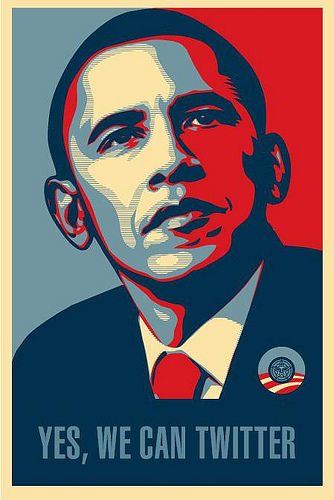
Our political discourse is shrinking to fit our smartphone screens. The latest evidence came in September 2015 when Barack Obama turned himself into the country’s Instagrammer-in-Chief. While en route to Alaska to promote his climate agenda, the president took a photograph of a mountain range from a window on Air Force One and posted the shot on the popular picture-sharing network. “Hey everyone, it’s Barack,” the caption read. “I’ll be spending the next few days touring this beautiful state and meeting with Alaskans about what’s going on in their lives. Lookingforward to sharing it with you.” The photo quickly racked up thousands of likes.
Ever since the so-called Facebook election of 2008, Obama has been a pacesetter in using social media to connect with the public. But he has nothing on this year’s field of candidates. Ted Cruz live-streams his appearances on Periscope. Marco Rubio broadcasts “Snapchat Stories” at stops along the trail. Hillary Clinton and Jeb Bush spar over student debt on Twitter. Rand Paul and Lindsey Graham produce goofy YouTube videos. Even grumpy old Bernie Sanders has attracted nearly two million likers on Facebook, leading the New York Times to dub him “a king of social media.”
And then there’s Donald Trump. If Sanders is a king, Trump is a god. A natural-born troll, adept at issuing inflammatory bulletins at opportune moments, he’s the first candidate optimized for the Google News algorithm. In a typical tweet, sent out first thing Monday morning, he described Clinton aide Huma Abedin as “a major security risk” and “the wife of perv sleazebag Anthony Wiener.” Exuberantly impolitic, such messages attract Trump a vast web audience—four million followers on Twitter alone—while giving reporters and pundits fresh bait to feed on. What Trump understands is that the best way to dominate the online discussion is not to inform but to provoke.
Trump’s glow may fade—online celebrity has a fast-burning wick—but his ability to control the agenda this summer says a lot about the changing dynamics of political races. If traditional print and broadcast media required candidates to be nouns—stable, coherent figures—social media pushes them to be verbs, engines of activity. Authority and respect don’t accumulate on social media; they have to be earned anew at each moment. You’re only as relevant as your last tweet.
The more established among this year’s candidates have been slow to learn this lesson. That’s particularly true of Clinton and Bush, the erstwhile shoo-ins. Their Twitter tiff was an exception to their generally anodyne presence on social media. They’ve played it safe, burnishing their images as reliable public servants while trying to avoid any misstep that might blow up into a TV controversy. Bush’s various social-media feeds come off as afterthoughts. They promote his appearances, offer kudos to his endorsers and provide links to his merchandise store. What they don’t do—at least until he launched a Twitter attack on Trump yesterday—is make news. Clinton’s postings have been equally bland. Her Facebook feed is a mirror image of her Twitter feed, and both aim to give followers a warm-and-fuzzy feeling about the candidate.
Clinton’s predicament is a particularly painful one. She’s spent years filing the burrs off her personality, only to find that rough edges are in. Back in June, her campaign issued an Official Hillary 2016 Playlist on Spotify. It was packed with upbeat, on-message tunes (“Brave,” “Fighters,” “Stronger,” “Believer”), but it sounded like an anachronism in a campaign that’s more punk than pop.
Twice before in the last hundred years a new medium has transformed elections. In the 1920s, radio disembodied candidates, reducing them to voices. It also made national campaigns far more intimate. Politicians, used to bellowing at fairgrounds and train depots, found themselves talking to families in their homes. The blustery rhetoric that stirred big, partisan crowds came off as shrill and off-putting when piped into a living room or a kitchen. Gathered around their wireless sets, the public wanted an avuncular statesman, not a firebrand. With Franklin Roosevelt, master of the soothing fireside chat, the new medium found its ideal messenger.
In the 1960s, television gave candidates their bodies back, at least in two dimensions. With its jumpy cuts and pitiless close-ups, TV placed a stress on sound bites, good teeth and an easy manner. Image became everything, as the line between politician and celebrity blurred. John Kennedy was the first successful candidate of the TV era, but it was Ronald Reagan and Bill Clinton who perfected the form. Born actors, they could project a down-home demeanor while also seeming bigger than life…
Part two (II) of this article will be published soon.
This is a Nicolas Carr’s article curated from Politico Magazine – Published in September 2015.
Follow us: @gillesametepe on Twitter | @gillesametepe on Instagram.
[Le politicien]
#Politically_yours.

Woowww Brilliant work……..Your analysis are on point………
More grease 2 your elbow……..
Gilles bon traville
#wordpress
LikeLiked by 1 person
..Thank you very much.
LikeLike